 |
| A family saga: the kites through the family Deffain | Grand Bazar, unique "museum" in France | Home Wokipi-kite |
At the beginning of the last century, the Turchet company sells rolling or rocking horses, small car harness, skittles, and many other toys. In his workshop near Paris, it makes beautiful sailboats and an impressive range of kites brand Gomez. At the time, the kites are not bottom-of-the-range toys. Instead, they are sold to wealthy clients that are intended sometimes for children, but more frequently in sports adults, raised by the passion that emerges around aviation. |
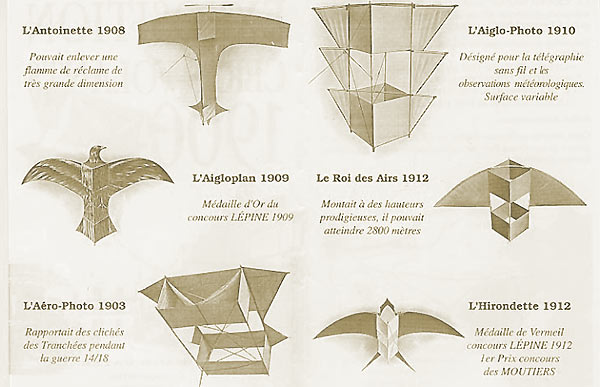 |
At that time, from 1900 to 1910 in Paris, Charles Deffai was a commercial traveler in wooden toys and kites at M. Georges Tranchant, located in Montreuil-sous-Bois, near Paris. Charles Deffain joined the Turchet company in 1910 (Anthony). |
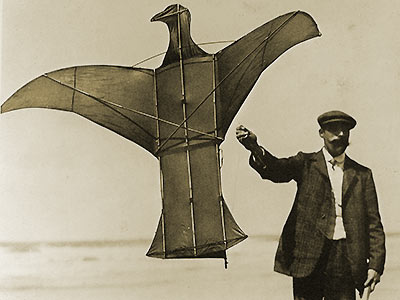 |
| The models developed in Turchet get many awards: Gold Medal at the Concours Lepine in 1909 for Aiglopan - Silver-gilt medal at the Concours Lepine in 1912 and first prize at the constest Moutiers for Hirondette. The dynamism of the Turchet company is due to Charles Deffain, which is associated with his employer before buying the entire company in 1921 |
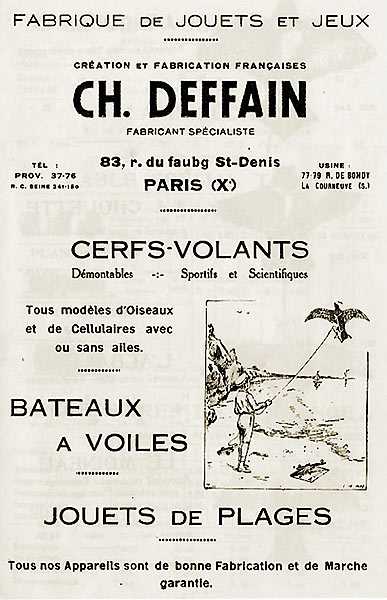 |
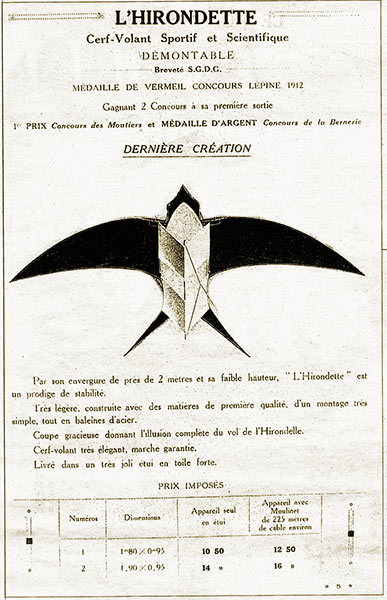 |
The company Turchet-Defffain sells even a winch designed to wind thousand meters of cable. This equipment was recommended for the use of larger models as Aiglo-Photo. Charles Deffain also bought numerous patents and creates his own company, the brand "Toys artistic Eclecta" just to see the day, with a store in Paris and a factory in La Courneuve. Earned by the passion of kites, Deffain personally looking at the development of new models to complement its range, now marketed under his name. The challenge is to grow the business while maintaining its high level of quality. |
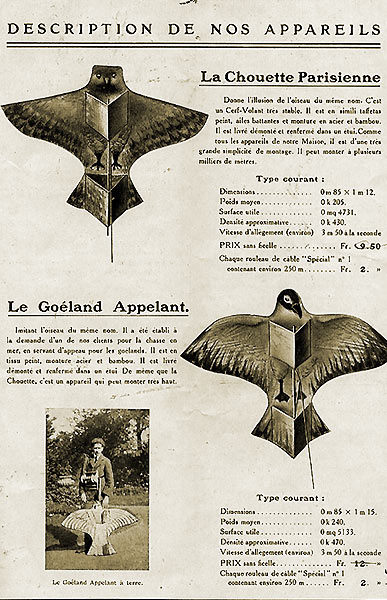 |
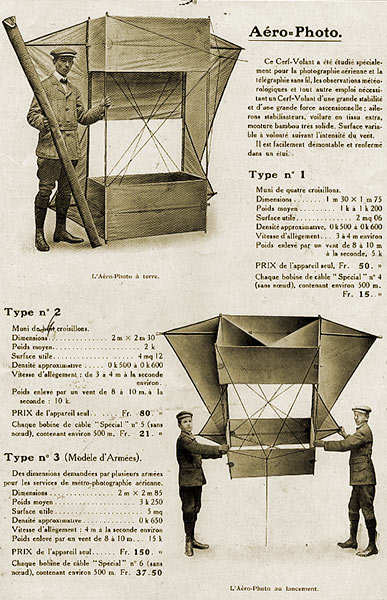 |
Now, adults are not the main customers, but the kids are mad about it. The workshop produced more and more models whose design dates back for some, almost half a century! |
In 1970, he created promotional kites. At that time the production could reach 12,000 units per year. In 1976, the grand-son of Charles Deffain, Claude, took charge of the company and continues to manufacture some models until 1980. In the catalog, the traditional range is limited, the last few years, in five models with King Airs (Roi des Airs) sold between 100 F and 150 F depending on its size. Most popular and least expensive, American cost 18 F. Kite become convenience goods. Simplified to the extreme, flat, inexpensive, easy to assemble (even disposable after a few flights) it is hardly in the Deffain tradition. His quality criteria do not allow him to fight against the most basic production or face foreign producers who do not hesitate to copy designs. |
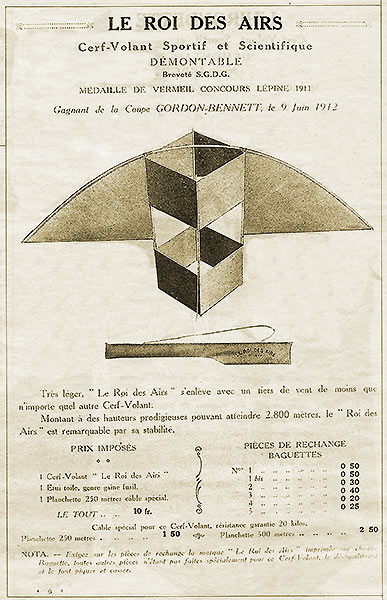 |
|
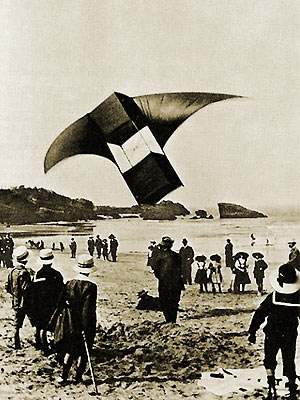 |
For the quality of construction, Deffain uses different materials and each of these materials to a particular function. For the frame: * Bamboo is used for the spars and yards placed in the direction of the wingspan (width) * Poplar is used for cross stiffeners located inside the central cell (in the case of kites cubic type). Note that there are also metal rods that would support parts of wing rounded. According to Georges Deffain, family workshops used the umbrella ribs of steel. Danger: When this steel is not stainless, it may leave rust stains on the sail. The sail is made of cotton canvas. The cable was in tanned hemp and winch in wooden . The most beautiful models were equipped with two wooden turned handles, placed on the axis. Other more sophisticated models had two additional handles, placed at each end of the winch, to facilitate assembly of the cable. When making stops in 1980, workshops Préfailles are completely empty. The only remaining family store, Grand Bazar Parisien who is still run by the hériters Deffain: |
|
Georges took over from Claude and today it is Sophie, the daughter of George, who will take over. The history of kites Deffain could have stopped there .... Following George and his daughter, always at the Grand Bazaar |
| Credits photos : Patrick Mouchague - Collection Georges and Sophie Deffain - Le Grand Bazar |